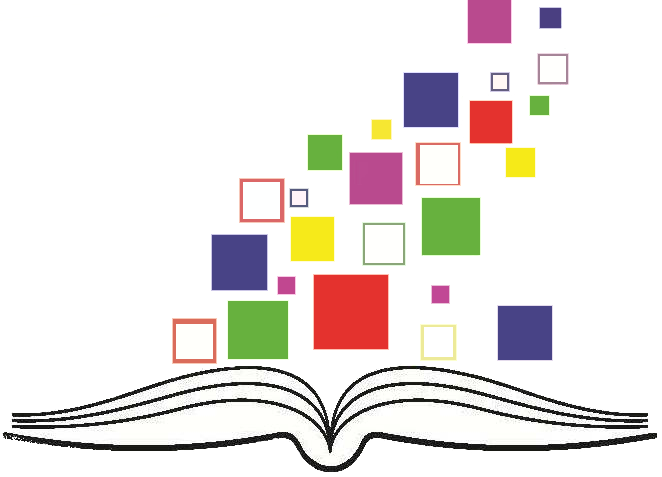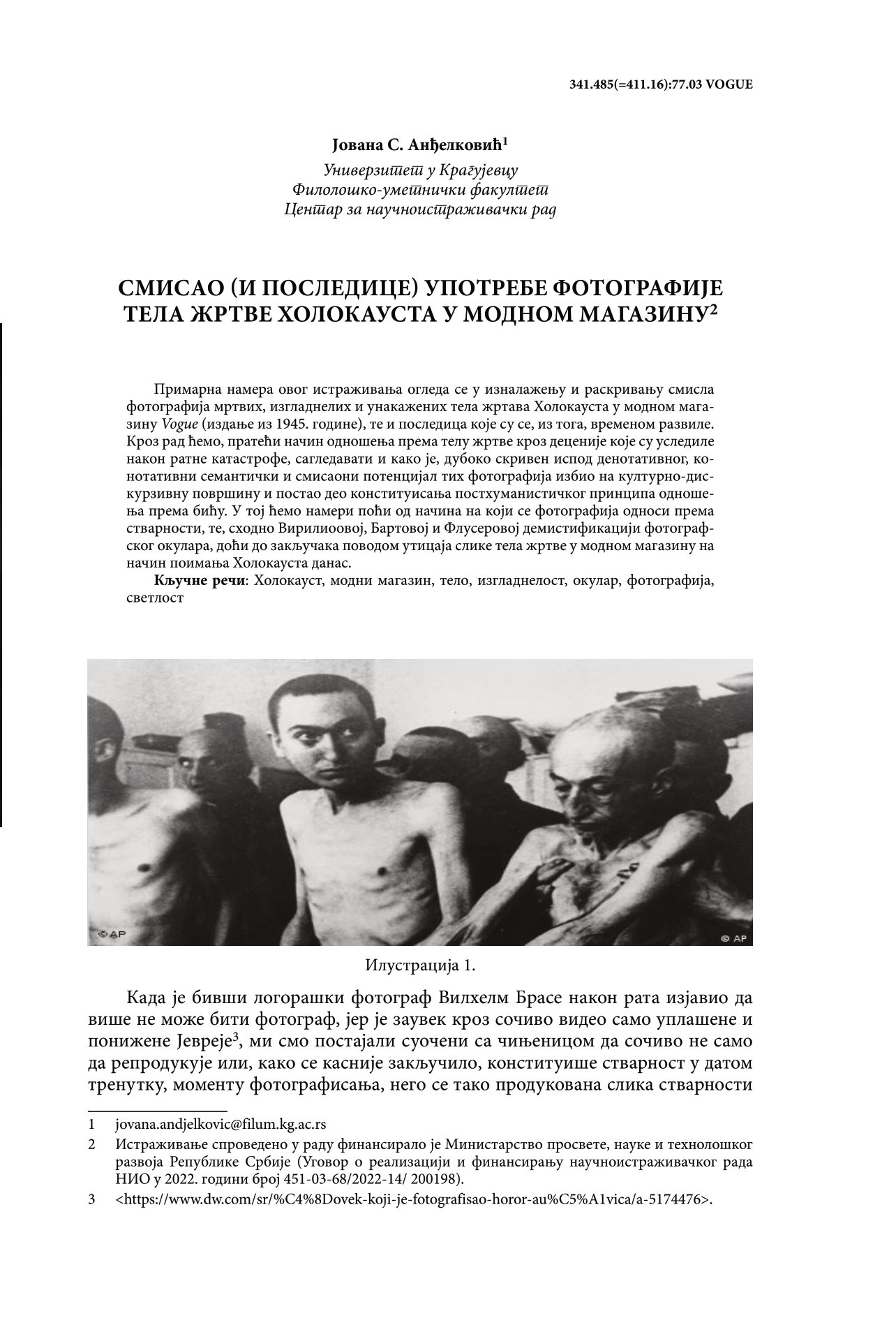Приказ основних података о документу
Smisao (i posledice) upotrebe fotografije tela žrtve Holokausta u modnom magazinu
The meaning (and consequences) of using a photograph of a Holocaust victim's body in a fashion magazine
| dc.contributor | Melić, Katarina | |
| dc.contributor | Nešić Pavković, Milena | |
| dc.contributor | Bošković, Dragan | |
| dc.creator | Anđelković, Jovana S. | |
| dc.date.accessioned | 2023-12-30T20:41:39Z | |
| dc.date.available | 2023-12-30T20:41:39Z | |
| dc.date.issued | 2023 | |
| dc.identifier.isbn | 978-86-80596-49-5 | |
| dc.identifier.uri | https://www.jevrejskadigitalnabiblioteka.rs/handle/123456789/2640 | |
| dc.description.abstract | Primarna namera ovog istraživanja ogleda se u iznalaženju i raskrivanju smisla fotografija mrtvih, izgladnelih i unakaženih tela žrtava Holokausta u modnom magazinu „Vogue” (izdanje iz 1945. godine), te i posledica koje su se, iz toga, vremenom razvile. Kroz rad ćemo, prateći način odnošenja prema telu žrtve kroz decenije koje su usledile nakon ratne katastrofe, sagledavati i kako je, duboko skriven ispod denotativnog, ko- notativni semantički i smisaoni potencijal tih fotografija izbio na kulturno-diskurzivnu površinu i postao deo konstituisanja posthumanističkog principa odnošenja prema biću. U toj ćemo nameri poći od načina na koji se fotografija odnosi prema stvarnosti, te, shodno Virilioovoj, Bartovoj i Fluserovoj demistifikaciji fotografskog okulara, doći do zaključaka povodom uticaja slike tela žrtve u modnom magazinu na način poimanja Holokausta danas. | sr |
| dc.description.abstract | The primary purpose of this research is to find and reveal the meaning of photographs of dead, starved and disfigured bodies of Holocaust victims in “Vogue” fashion magazine (edition from 1945), and the consequences that developed over time. Through the work, following the manner of treating the victim's body through the decades that followed the war disaster, we will look at how, deeply hidden under the denotative, connotative semantic and meaningful potential of those photographs, emerged the cultural and discursive surface and became part of the constitution of the post-humanist principle of treatment towards being. With that intention, we will start from the way photography relates to reality, and, according to Virilio's, Barth's and Flusser's demystification of the photographic eyepiece, reach conclusions regarding the influence of the image of the victim's body in a fashion magazine on the way the Holocaust is understood today. | sr |
| dc.language.iso | sr | sr |
| dc.publisher | Kragujevac : Filološko-umetnički fakultet | sr |
| dc.relation | info:eu-repo/grantAgreement/MESTD/inst-2020/200198/RS// | sr |
| dc.rights | openAccess | sr |
| dc.rights.uri | https://creativecommons.org/licenses/by-nc-nd/4.0/ | |
| dc.source | Holokaust, sećanјe, kultura. (2) | sr |
| dc.subject | Holokaust | sr |
| dc.subject | modni magazin | sr |
| dc.subject | telo | sr |
| dc.subject | izgladnelost | sr |
| dc.subject | fotografija | sr |
| dc.subject | Holocaust | sr |
| dc.subject | fashion magazine | sr |
| dc.subject | body | sr |
| dc.subject | starvation | sr |
| dc.subject | photography | sr |
| dc.title | Smisao (i posledice) upotrebe fotografije tela žrtve Holokausta u modnom magazinu | sr |
| dc.title | The meaning (and consequences) of using a photograph of a Holocaust victim's body in a fashion magazine | sr |
| dc.type | bookPart | sr |
| dc.rights.license | BY-NC-ND | sr |
| dc.identifier.fulltext | http://jevrejskadigitalnabiblioteka.rs/bitstream/id/8438/SmisaoIPoslediceUpotrebeFotografijeOCR.pdf | |
| dc.type.version | publishedVersion | sr |
| dc.citation.spage | 9 | |
| dc.citation.epage | 20 | |
| dc.citation.epage | The collection of papers is the result of research within Holocaust Studies, which are conducted at the University of Kragujevac under the support of the Claims Conference (Conference on Jewish Material Claims Against Germany). | |
| dc.description.other | Zbornik je rezultat istraživanja u okviru Studija Holokausta koje se pod pokrovitelјstvom Claims Conference (Conference on Jewish Material Claims Against Germany) izvode na Univerzitetu u Kragujevcu. | sr |
| dc.identifier.rcub | https://hdl.handle.net/21.15107/rcub_jdb_2640 |

